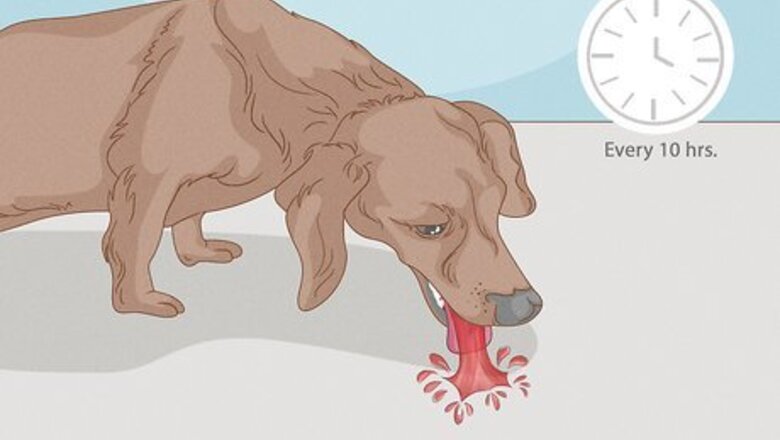
views
HGE (AHDS) Symptoms
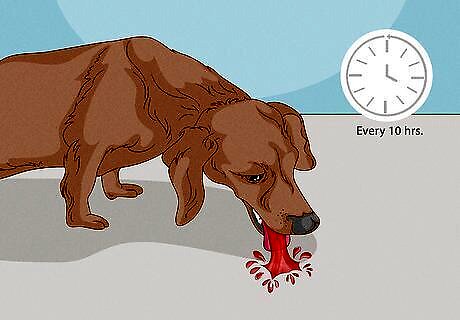
Start monitoring your dog whenever they vomit. The key symptom of HGE is blood in a dog’s vomit or diarrhea. However, in 80% of cases, the bloody vomit will occur within 10 hours of normal vomiting. If your dog already vomited recently, pay close attention to their behavior and look carefully any future vomit or diarrhea. Begin noting any other symptoms or changes in behavior starting now. Give your dog water, but no food, after they’ve vomited. When a dog vomits, they often become dehydrated. If your dog just vomits once but then goes back to resuming their normal activities and there’s no change in their behavior, you can resume normal food and water in 12 hours or so.
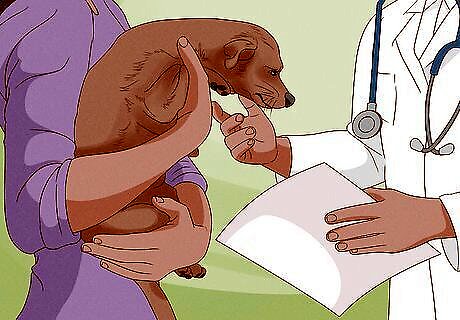
Go to the vet ASAP if you see blood in your dog’s stool or vomit. If your dog has bloody diarrhea or vomit, they almost certainly have HGE. If you already have care instructions for a diagnosis, follow those. If this is the first time this has happened, go to the vet immediately. Your dog can almost certainly be treated, but untreated HGE can be fatal. The bloody stool will be bright red, and soft. Many people say that it looks like raspberry jam. The bloody vomit is a little less immediately identifiable. Since the blood mixes with whatever is in your dog’s stomach, it may be slightly orange in color, or there may be streaks of blood in otherwise non-red mucus. Just to be clear, either of these symptoms are more than enough to qualify for an emergency vet visit. Do not wait until your dog has blood in both their diarrhea and vomit.
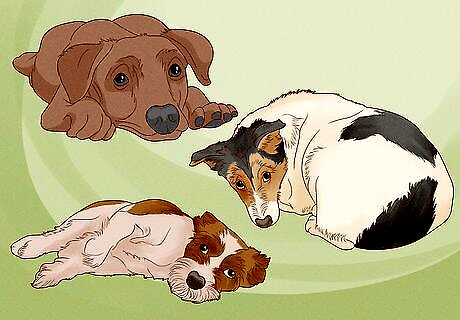
Watch out for signs of anorexia, stomach pain, or lethargy. If they aren’t vomiting or excreting blood yet, see if they’re refusing to eat. Also note signs of stomach pain. This includes an arched back, guarding of the stomach, hypersalivation, or a bloated stomach. Keep an eye out for general lethargy, too. These may be signs your dog has HGE. If your dog has all of these symptoms but they haven’t vomited or passed blood yet, do not wait for them to do so. Take them to a vet before the symptoms get worse.

Note any odd behavior, as HGE may be a symptom of an underlying issue. HGE is often unexplained and treated on its own, but it’s also a common sign that something else is going on. Pay close attention to your dog’s behavior. You know them better than anyone else, so note anything strange that your dog wouldn’t normally do. It’ll be helpful information if you need to take them to a vet. Look out for: Excessive water consumption or no drinking at all. Changes in breathing or energy levels. Balance issues, wincing, whining, or crying. Aggressive or confused behavior.

Consider risk factors based on your dog’s breed and age. If you’re still wondering whether your dog has HGE, lean more towards “yes” if your pup is around 5-years-old. This is the age where HGE is most likely to occur. Also, assume it’s HGE if your dog is a toy breed. Miniature pinschers, schnauzers, poodles, and dachshunds are all at higher risk of HGE. While toy breeds are more likely to get HGE, it can happen to any breed of dog.
Diagnosis and Treatment

Take your dog to the vet for professional treatment. The survival rate for HGE is over 95%, but only if your dog gets professional medical treatment. It may be scary to see your dog in pain, but this is extremely treatable. You cannot treat this condition at home if you have not sought out a vet’s guidance, so go to your vet ASAP. It’s possible that your dog may need to be hospitalized, but there are a variety of triage options a vet can employ to ensure your dog is pain-free in no time. This is an emergency. If your vet is closed, look for the nearest 24-hour emergency room for animals.
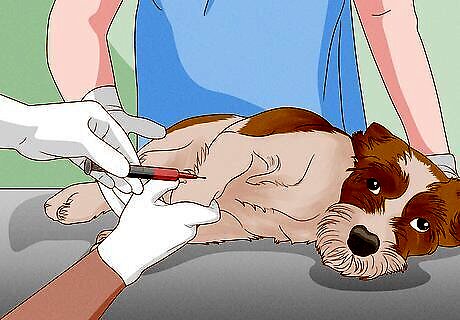
Get a formal diagnosis from your veterinarian. HGE can be a diagnosis on its own, although your vet may identify parvovirus, a bacterial infection, or a parasite as the underlying cause. The care and treatment plan will vary depending on what is causing this (if anything is at all), so the vet will give you specific guidance depending on what they see. There are no specific diagnostic tests for HGE, but a vet may order a packed cell volume panel by drawing blood to see if your dog’s blood levels are low.

Follow your vet’s specific care instructions to treat the issue. Depending on the diagnosis, your vet may prescribe medication, suggest a surgical intervention, or simply offer at-home care instructions to soothe an upset stomach. At bare minimum, a vet will provide fluids to your pup so that they can rehydrate, which is key after so much vomiting and defecation. Your vet will offer IV fluids with potassium and electrolytes to rehydrate your dog’s system. The vet will likely give your dog antibiotics and tell you to not feed your dog for at least 24 hours as their system stabilizes. If your vet provides a fluid treatment and your dog gets better, it is entirely possible that this never happens again. In fact, it’s likely! 85-90% of dogs who experience sudden HGE will not have this problem in the future.
Recovery and Home Care
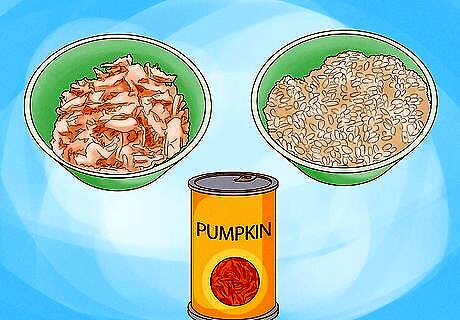
Reintroduce bland food slowly over time per your vet’s instructions. Typically, your vet will tell you to start feeding your dog a diet of bland foods—like boiled, unseasoned chicken and rice or canned pumpkin—to give your dog’s stomach time to repair itself. Follow your vet’s feeding instructions. Most of the time, you’ll provide this bland diet for a week or two before you move back to normal kibble or wet food. Your dog should show a big improvement after the first 24 hours, although it may take them up to 5 days to fully recover. In the future, if your dog ever has general diarrhea, laying off their normal food for a day or so and feeding them boiled chicken and plain rice can help settle their stomach. Relapse symptoms will be identical to the symptoms you experienced the first time your dog had HGE.
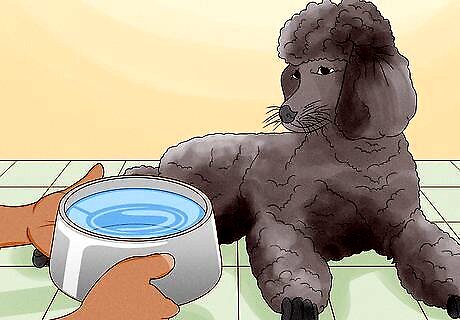
Ensure your dog always has access to clean, fresh water. Never restrict your dog’s fluid intake and always keep a bowl of water around for them to freely access. Even if you need to take your dog on an extra walk or two every day to relieve themselves, it’ll help prevent dehydration. Dogs who suffer from HGE and HGE-inducing conditions need plenty of water, so this will keep your dog comfortable. If your dog wasn’t diagnosed with an underlying condition, your vet may instruct you to give your dog regular doses of Pedialyte or Kaopectate in regular amounts to ensure they don’t become dehydrated.

Keep a close eye on your dog’s stool in the future. Roughly 10-15% of dogs who experience HGE once will have a second bout of the illness. Before you pick their poop up, take a close look to make sure there aren’t streaks of blood in it. If you notice any bloody vomit or stool in the future, contact your vet immediately.
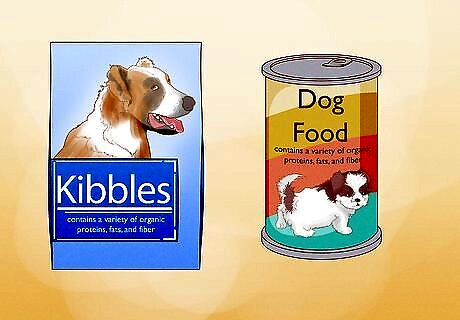
Feed your dog a high-quality, balanced diet. Ask your vet about what kind of diet is ideal for your dog. If you need to look for a new food brand, opt for a balanced kibble or wet food that contains a variety of organic proteins, fats, and fiber. It can take a little bit of trial and error to find the ideal food for your dog. When switching foods, always transition your dog by introducing the new food slowly over time. Start by adding a small scoop of the new food to the old food, then work your way up over 1-2 weeks until they’re totally on the new food.
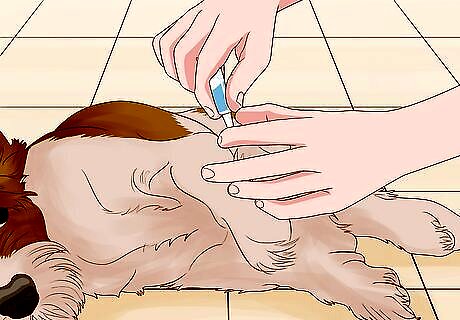
Give preventative medications for fleas, ticks, and heartworms. Many bacteria that cause HGE are transferred from parasites. If you aren’t already giving your dog preventative meds for fleas, ticks, and heartworms, talk to your vet about starting now. By giving your pup monthly medications for common parasites, you’ll prevent one of the most common causes of HGE. You normally need a prescription for these preventative meds, and the dosage depends on your dog’s weight and age, so don’t just start giving them random medications you buy online.
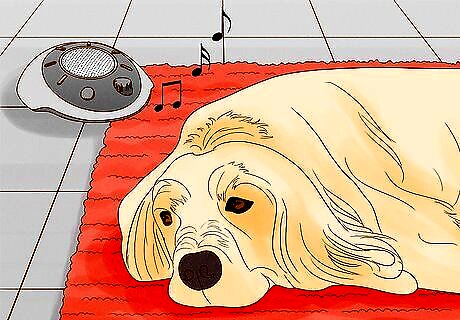
Maintain a stress-free environment for your dog. It’s not fully understood why, but stress seems to be a risk factor for HGE. If your dog is terrified or over-stimulated on a regular basis, do whatever you can to make things more laid back. Whether it’s moving their crate to a quieter part of your home, or minimizing the amount of time they spend around unfamiliar dogs, try to keep things calm. If your dog is scared of fireworks, going out of town for holidays or staying inside might be a good move. White noise machines can help drown out the sound of thunder if your pup is terrified of thunderstorms.




















Comments
0 comment